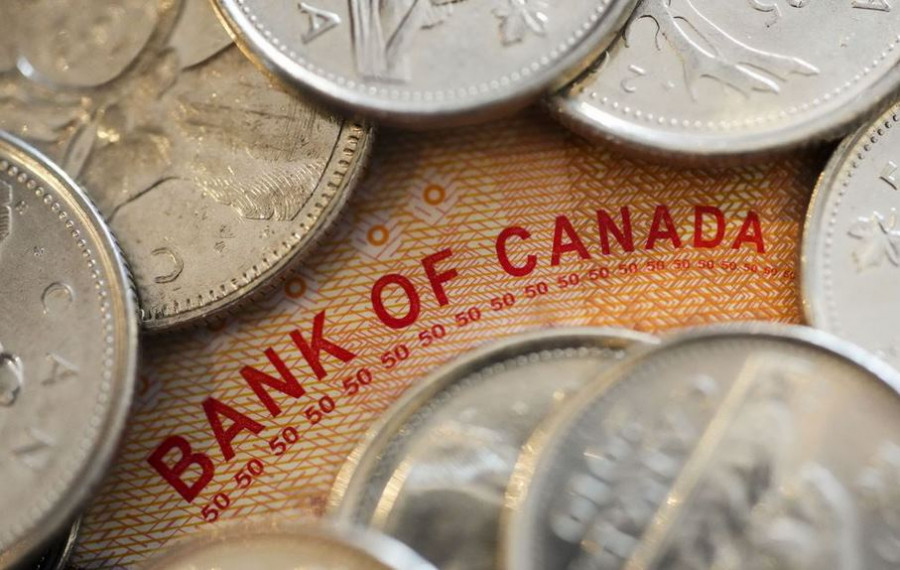The Canadian dollar against the American currency is actively losing its position, reflecting the results of the June meeting of the Bank of Canada. The situation is uncommon, as the Canadian regulator suddenly raised the interest rate by 25 basis points yesterday, contrary to the general expectations of experts for maintaining the status quo. However, despite such a hawkish outcome, the Australian dollar came under significant pressure. Traders projected yesterday's Canadian events onto upcoming events in the United States. After all, next week, on June 14th, the Federal Reserve will announce the results of its next meeting.
Results of the Canadian central bank meeting
The Bank of Canada became the second central bank to resort to an additional tightening of monetary policy against the opposite forecasts of most experts. Just a day before this, the Reserve Bank of Australia made a similar decision, unexpectedly raising the interest rate by 25 basis points. The culprit is inflation, either accelerating or decreasing actively enough.
Commenting on the decision, the head of the Bank of Canada stated that over the past month, concerns have increased about inflation "staying significantly above the 2% target."
It is necessary to recall here that according to the latest data, the overall consumer price index rose to 4.4% in annual terms in April (in March, the figure was at 4.3%), while most experts predicted a decrease to the target of 4.1%. In monthly terms, the CPI index increased by 0.7%, while the consensus forecast was at 0.4% (in March, the indicator was at 0.5%). The core consumer price index, which excludes volatile food and energy prices, also remained in the "green zone," reaching 4.1% in annual terms, while analysts expected a decline to 3.9%.
The rise in inflation was recorded against the backdrop of fairly good data on Canada's economic growth in the first quarter. According to published data, the annual growth of real GDP in the first quarter was 3.1%, while experts expected a more modest result of 2.5%. This significant growth followed a 0.1% contraction of the economy in the last quarter of the previous year. In quarterly terms, real GDP increased by 0.8%, while most analysts expected growth of 0.4%.
In other words, the Canadian economy grew faster than expected in the first quarter. However, inflation also demonstrated more significant growth, contrary to experts' forecasts of decreased core inflation indicators. This combination allowed the Canadian regulator to resort to another round of interest rate hikes.
So why did the Canadian dollar decline across the market in response to the results of the June meeting of the Bank of Canada? There are two reasons for such behavior of the Australian dollar.
First, the Canadian regulator removed the April wording in the accompanying statement stating that it is ready for further rate hikes "if necessary." This is a dovish signal indicating that the June decision is the final chord of the current monetary policy tightening cycle.
Second, as mentioned above, the Bank of Canada became the second central bank to tighten its monetary policy against the forecasts of most experts for maintaining the status quo. Both the Reserve Bank of Australia and the Canadian central bank pointed to inflation, which remains sufficiently high.
These statements are also true for the United States, especially in light of the latest data on the growth of the core PCE index. This key inflation indicator has shown an upward trend, after which several representatives of the Federal Reserve have toughened their rhetoric and allowed for a rate hike at the June meeting.
It is noteworthy that after the meetings of the Reserve Bank of Australia and the Bank of Canada, the probability of a 25-basis-point rate increase by the Federal Reserve in June has risen from 20% to 30%, according to CME FedWatch Tool. And although the chances of maintaining the status quo are estimated at 70%, the US dollar continues to enjoy increased demand, especially against the Canadian currency.
From a technical perspective, the USD/CAD pair on the daily chart is currently situated between the middle and lower lines of the Bollinger Bands indicator, indicating a downside bias. Meanwhile, the Ichimoku indicator has formed a bearish "Lines Parade" signal, suggesting bearish sentiment. The nearest support level is 1.3330 (the lower line of the Bollinger Bands on the daily chart). Sellers must overcome this target to establish a range between 1.3330-1.3230 and indicate further downside prospects. The strongest support level is at 1.3230, the lower line of the Bollinger Bands on the weekly chart, and coincides with the lower boundary of the Kumo cloud.










